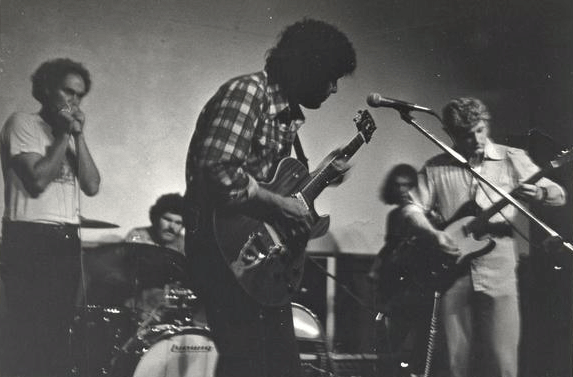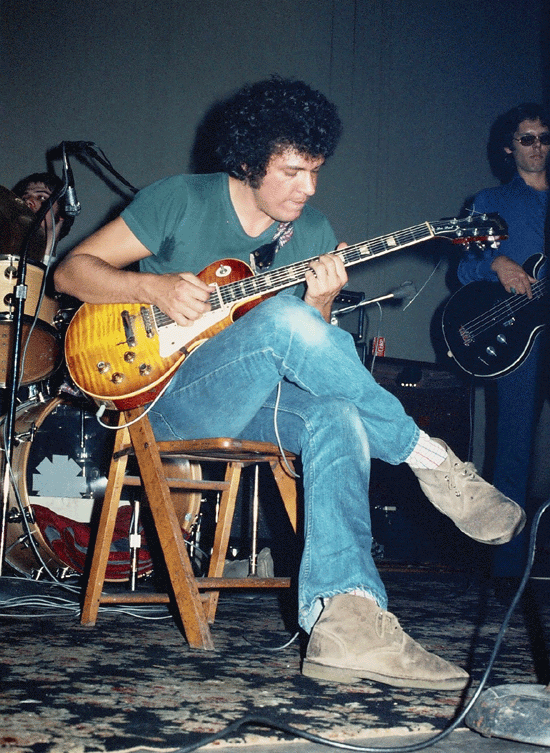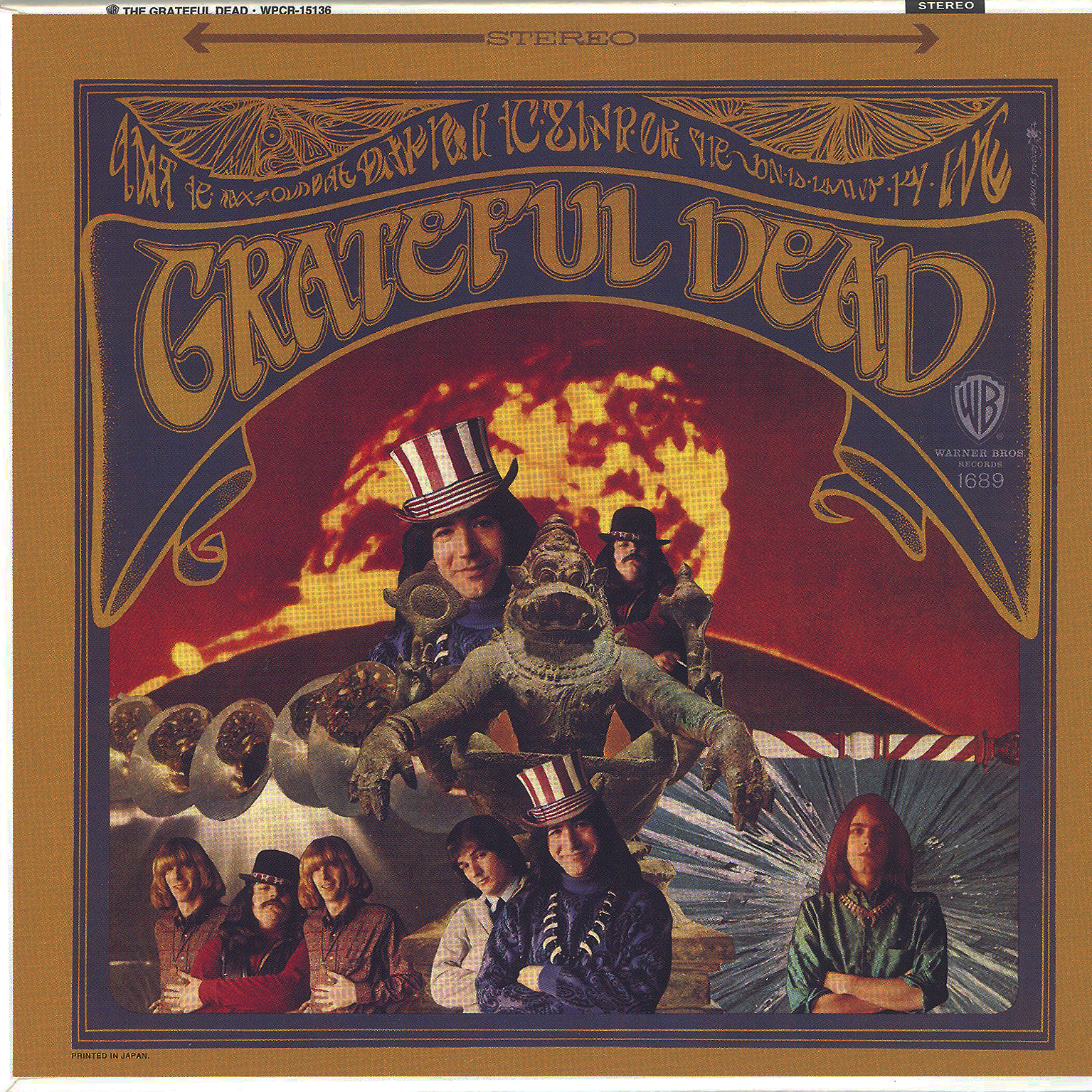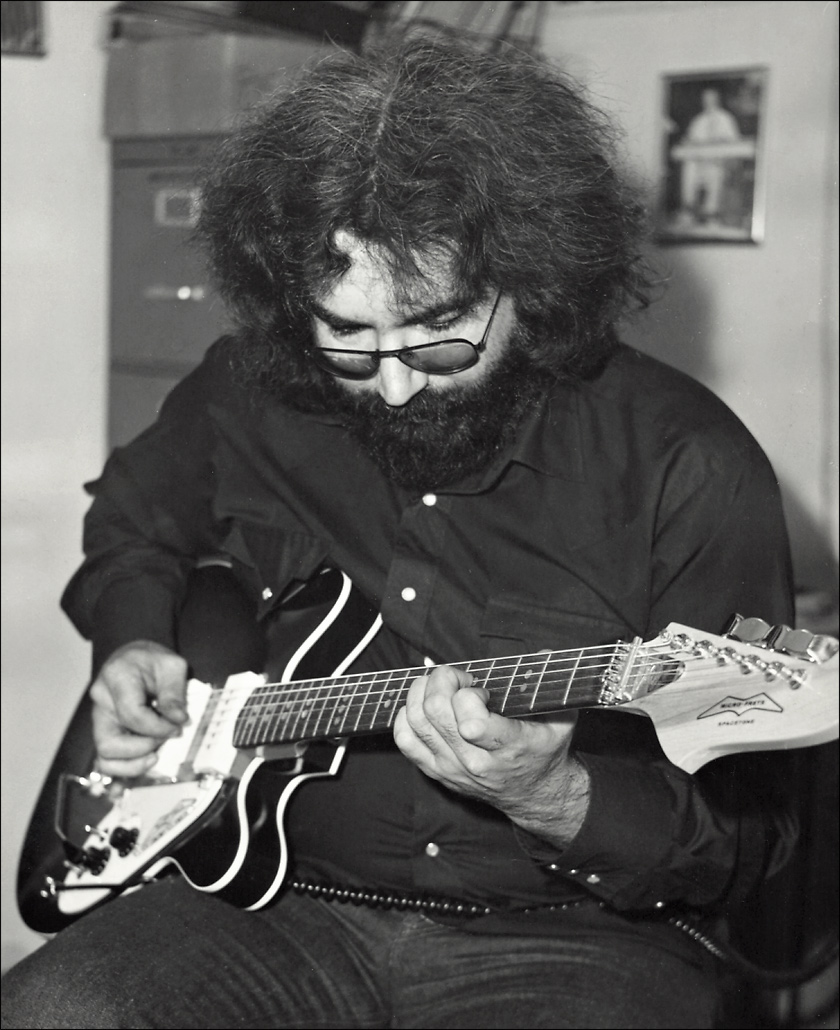Size: 157 MB
Bitrate: 256
mp3
Ripped by: ChrisGoesRock
Artwork Included
Source: Japan SHM-CD Remaster
The Grateful Dead is the debut album of the Grateful Dead. It was
recorded by Warner Bros. Records, and was released in March 1967. According to
bassist Phil Lesh in his autobiography Searching for the Sound: My Life with
the Grateful Dead, the album was released as San Francisco's Grateful Dead.
The album was recorded primarily at Studio A in Los
Angeles in only four days. The band had wanted to record the album in their
hometown of San Francisco, but no good recording studios existed in the area at
the time. The group picked David Hassinger to produce because he had worked as
an engineer on the Rolling Stones' "(I Can't Get No) Satisfaction"
and Jefferson Airplane's Surrealistic Pillow album (on the latter of which
Jerry Garcia had guested as well having suggested the album's title).
Demands by Warner Bros. resulted in four of the tracks, originally
longer, being cut short. Phil Lesh comments in his autobiography that "to
my ear, the only track that sounds at all like we did at the time is Viola Lee
Blues. ... None of us had any experience with performing for recording ...
although the whole process felt a bit rushed."
The album was seen as "a big deal in San Francisco." Even
though this was true, it did not see much air play on AM radio stations outside
San Francisco. It would be a couple of months before free-form FM radio
stations began to take shape. Warner Bros. threw the band a release party at
the Fugazi Hall in North Beach. Joe Smith is noted for saying he is "proud
that Warner Bros. is introducing the Grateful Dead to the world."
A remastered version with the full versions of five album tracks, plus
six bonus tracks, was released by Rhino in as part of the box set The Golden
Road (1965-1973) in 2001, and as a separate album in 2003.
The song "Alice D. Millionaire" was inspired by an autumn 1966
newspaper headline "LSD Millionaire", about the Dead's benefactor and
sound engineer Owsley Stanley.
 |
| Grateful Dead (Billboard Magazine Advertise 1967) |
In the original design for the album cover, the cryptic writing at the
top read, "In the land of the dark, the ship of the sun is driven by the
Grateful Dead", with the phrase "Grateful Dead" in large
letters. At the band's request, the writing, except for "Grateful
Dead", was changed by artist Stanley Mouse to be unreadable. According to
fan legend, the saying is from Egyptian Book of the Dead.
The band used the collected pseudonym McGannahan Skjellyfetti for their
group-written originals and arrangements. The name derived from a corruption of
a character name in the Kenneth Patchen work The Memoirs of a Shy Pornographer.
The entire LP was remixed in the early 1970s by the Grateful Dead
themselves—the original mix is found on LPs bearing the Gold (1967 stereo/mono)
Warner Brothers label or W7/WB dark green Warner Brothers label (1968-1971).
The remix (palm trees Burbank label) differs significantly from the original
1967 release.
The album was reissued for Record Store Day 2011 on 180g vinyl cut from the
original analog/mono masters from 1967. This is the first time in 40+ years it
has been released in this form.
The 2013 high definition digital remastered release features the edited
versions, as released in 1967, of the four tracks which were extended in the
2003 Rhino release.
 |
Open picture in a new window
for 100% size |
The Grateful Dead's eponymously titled debut long-player was issued in
mid-March of 1967. This gave rise to one immediate impediment -- the difficulty
in attempting to encapsulate/recreate the Dead's often improvised musical magic
onto a single LP. Unfortunately, the sterile environs of the recording studio
disregards the subtle and often not-so-subtle ebbs and zeniths that are so
evident within a live experience. So, while this studio recording ultimately
fails in accurately exhibiting The Grateful Dead's tremendous range, it's a
valiant attempt to corral the group's hydra-headed psychedelic jug-band music
on vinyl. Under the technical direction of Dave Hassinger -- who had produced
the Rolling Stones as well as the Jefferson Airplane -- the Dead recorded the
album in Los Angeles during a Ritalin-fuelled "long weekend" in early
1967.
Rather than prepare all new material for the recording sessions, a vast
majority of the disc is comprised of titles that the band had worked into their
concurrent performance repertoire. This accounts for the unusually high ratio
(seven:two) of folk and blues standards to original compositions. The entire
group took credit for the slightly saccharine "Golden Road (To Unlimited
Devotion)," while Jerry Garcia (guitar/vocals) is credited for the noir
garage-flavored raver "Cream Puff War." Interestingly, both tracks
were featured as the respective A- and B-sides of the only 45 rpm single
derived from this album. The curious aggregate of cover tunes featured on the
Dead's initial outing also demonstrates the band's wide-ranging musical roots
and influences.
These include Pigpen's greasy harp-fuelled take on Sonny Boy Williamson's
"Good Morning Little School Girl" and the minstrel one-man-band folk
of Jessie "the Lone Cat" Fuller's "Beat It On Down the
Line." The apocalyptic Cold War folk anthem "Morning Dew" (aka
"[Walk Me Out in The] Morning Dew") is likewise given a full-bodied
electric workout as is the obscure jug-band stomper "Viola Lee Blues."
Fittingly, the Dead would continue to play well over half of these tracks
in concert for the next 27 years. [Due to the time limitations inherent within
the medium, the original release included severely edited performances of
"Good Morning Little School Girl," "Sitting on Top of the
World," "Cream Puff War," "Morning Dew," and
"New, New Minglewood Blues." These tracks were restored in 2001, when
the Dead's Warner Brothers catalog was reassessed for the Golden Road
(1965-1973) box set.] [Wikipedia
+ AMG]
Personnel:
• Jerry Garcia – lead guitar,
vocals, arrangement
• Bill
Kreutzmann – drums
• Phil Lesh –
bass guitar, vocals
• Ron
"Pigpen" McKernan – keyboards, harmonica, vocals
• Bob Weir – guitar, vocals
01. "The Golden Road (To Unlimited
Devotion)" (Grateful Dead) – 2:07
02. "Beat It on Down
the Line" (Jesse Fuller) – 2:27
03. "Good Morning
Little School Girl" (Sonny Boy Williamson) – 5:56
04. "Cold Rain and
Snow" (Obray Ramsey) – 2:25
05. "Sitting on Top of
the World" (Lonnie Chatmon and Walter Vinson) – 2:01
06. "Cream Puff
War" (Jerry Garcia) – 2:25
07. "Morning Dew"
(Bonnie Dobson and Tim Rose) – 5:00
08. "New, New
Minglewood Blues" (Noah Lewis) – 2:31
09. "Viola Lee Blues" (Lewis) – 10:01
Bonus Tracks:
10. "Alice D. Millionaire" (Grateful
Dead) – 2:22
11. "Overseas Stomp
(The Lindy)" (Jab Jones and Will Shade) – 2:24
12. "Tastebud"
(Ron McKernan) – 4:18
13. "Death Don't Have
No Mercy" (Reverend Gary Davis) – 5:20
14. "Viola Lee
Blues" (edited version) (Lewis) – 3:00
15. "Viola Lee
Blues" (live at Dance Hall, Rio Nido, CA 9/3/67) (Lewis) – 23:13
* The Japan CD reissue contains the full-length
versions of "Good Morning Little Schoolgirl", "Sitting on Top of
the World", "Cream Puff War", "Morning Dew", and
"New, New Minglewood Blues"
* Tracks
10–13 recorded at RCA Victor Studio A, Hollywood, CA on February 2, 1967
* Track 14 is an edited
version of track 9.
* Track
15 recorded live at Dance Hall, Rio Nido, CA on September 3, 1967; the master
analog reels of "Viola Lee Blues" are said to exclude the beginning
of the song.
1.
Link
or
2.
Link
.
 |
| open picture in a new window for 100% size |






















